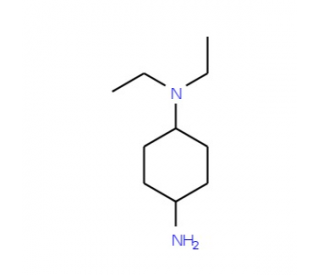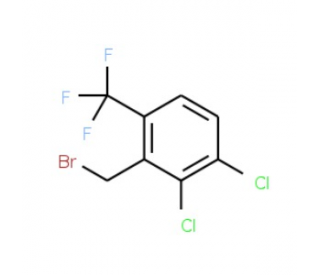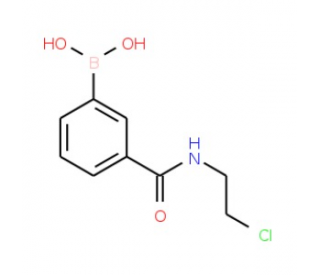詳細(xì)說(shuō)明
Purity
>80%, by SDS-PAGE visualized with Silver Staining and quantitative densitometry by Coomassie? Blue Staining.
Endotoxin Level
<0.10 EU per 1 μg of the protein by the LAL method.
Activity
Measured by its binding ability in a functional ELISA. When Recombinant Human USAG1 (Catalog # ) is coated at 2 μg/mL, Recombinant Human LRP-4 binds with an apparent K d <1 nM.
Source
Chinese Hamster Ovary cell line, CHO-derived
Human LRP-4
(Ser21-Ser1725)
Accession # AAI36669GGGSGGGSGGGS 6-His N-terminus C-terminus Accession #
N-terminal Sequence
AnalysisSer21 & Gly212
Predicted Molecular Mass
191 kDa
SDS-PAGE
180-225 kDa, reducing conditions
5948-LR |
| |
Formulation Lyophilized from a 0.2 μm filtered solution in PBS. | ||
Reconstitution Reconstitute at 300 μg/mL in PBS. | ||
Shipping The product is shipped with polar packs. Upon receipt, store it immediately at the temperature recommended below. | ||
Stability & Storage: Use a manual defrost freezer and avoid repeated freeze-thaw cycles.
|
Background: LRP-4
LDL receptor-related protein 4 (LRP-4), also known as Megf7, is an approximately 220 kDa type I membrane protein in the LDL receptor superfamily. LRP-4 plays an important role in development of the neuromuscular junction (NMJ), bones, teeth, mammary placodes, and hair follicles (1, 2). Mature human LRP-4 consists of a 1705 amino acid (aa) extracellular domain (ECD), a 21 aa transmembrane segment, and a 159 aa cytoplasmic domain. The ECD contains 3 EGF-like domains, 8 LDLR-A domains, and 20 LDLR-B repeats that fold into 4 beta-propeller domains (3, 4). Within the ECD, human LRP-4 shares 97% aa sequence identity with mouse and rat LRP-4. The ECD of LRP-4 can be shed by ADAM10 mediated cleavage (5). LRP-4 is expressed on myotubes (6, 7), neurons (8, 9), osteocytes and osteoblasts (10, 11), developing tooth epithelium (12), and male and female germ cells (13). It is localized to NMJ on developing myotubes, and it associates in cis with the muscle-specific kinase MuSK (6, 7). Its binding to neuron-derived Agrin promotes additional LRP-4 association with MuSK, MuSK activation, clustering of AChR, and post-synaptic development of the NMJ (6, 7, 14). LRP-4 also enhances presynaptic differentiation of the NMJ, although this does not require Agrin (14). Neuronal LRP-4 additionally binds ApoE and F-spondin (8, 9). LRP-4 regulates both BMP and Wnt signaling through binding to Wise, Sclerostin, and Dkk1 (10-12). These interactions are important for the control of bone growth and mineralization, tooth morphogenesis, and the development of mammary placodes, hair follicles, and whiskers (10-12, 15).
References:
Zong, Y. and R. Jin (2012) Cell. Mol. Life Sci. Nov 22 Epub.
Ohazama, A. et al. (2010) Am. J. Med. Genet. A 152A:2974.
Nakayama, M. et al. (1998) Genomics 51:27.
Tomita, Y. et al. (1998) J. Biochem. 124:784.
Dietrich, M.F. et al. (2010) PLoS ONE 5:e9960.
Kim, N. et al. (2008) Cell 135:334.
Zhang, B. et al. (2008) Neuron 60:285.
Lu, Y. et al. (2007) Brain Res. 1177:19.
Zisman, S. et al. (2007) J. Cell Biol. 178:1237.
Leupin, O. et al. (2011) J. Biol. Chem. 286:19489.
Choi, H.Y. et al. (2009) PLoS ONE 4:e7930.
Ohazama, A. et al. (2008) PLoS ONE 3:e4092.
Yamaguchi, Y.L. et al. (2006) Gene Expr. Patterns 6:607.
Yumoto, N. et al. (2012) Nature 489:438.
Ahn, Y. et al. (2013) Development 140:583.
Long Name:
LDL Receptor-related Protein 4
Entrez Gene IDs:
4038 (Human); 228357 (Mouse); 83469 (Rat)
Alternate Names:
CLSS; KIAA0816; low density lipoprotein receptor-related protein 4; low-density lipoprotein receptor-related protein 4; LRP10; LRP4; LRP-4; MEGF7LRP10; Multiple epidermal growth factor-like domains 7










 粵公網(wǎng)安備44196802000105號(hào)
粵公網(wǎng)安備44196802000105號(hào)